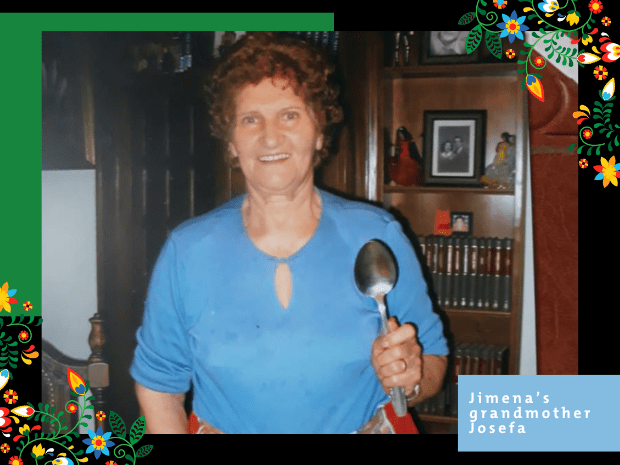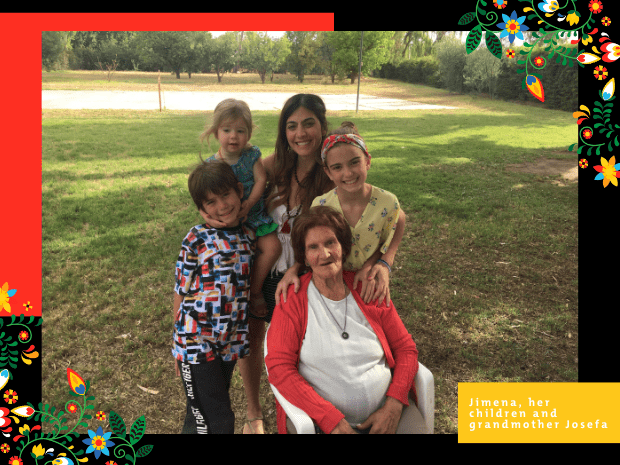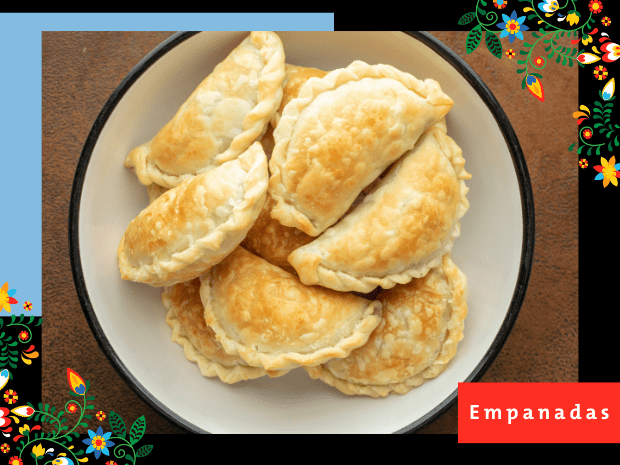Celebrating Hispanic Heritage Month: A Taste of Tradition
October 03, 2023
Home > About > News & Media > Story Center
Hispanic cuisine has become increasingly popular among Americans, capturing their hearts and appearing on menus nationwide, but it's more than just food. In the heart of every dish lies a story, a connection to culture, and a thread that binds generations together. Its vibrant flavors and rich traditions make it a piece of cherished cultural heritage.
As we celebrate Hispanic Heritage Month, we embark on a flavorful journey to honor this diversity and heritage. Jimena, who serves as Legacy Juntos Employee Resource Group (ERG) Co-Chair and dedicates her days as a supervisor for outpatient rehabilitation services at Legacy Good Samaritan Medical Center, carries a treasure close to her heart: her grandmother, Josefa, also known as "Fina."
In 1949, Fina embarked on a life-changing journey, leaving her native Spain to build a new life in Argentina. Despite the years that passed, Fina's accent remained a testament to her heritage. Her culinary expertise, however, was the true testament to her roots.

Fina had a gift – she could whip up the most delicious paella using a recipe that has since been cherished and passed down through generations.
Jimena reminisces, "She always made delicious meals and loved feeding the family and watching them enjoy her meals."
Today, 96-year-old Fina may not be as active in the kitchen as she once was, but her legacy lives on. Jimena and her family continue to gather and share stories of Fina's cooking and the unforgettable paella she created.
Now, let's take a look at the history of paella. Valencia in Eastern Spain is the home of paella. Did you know the first paella is believed to be cooked by Valencian farmers? The farmers cooked the foods they had in their hands for lunch. It was made of rice and whatever was to hand around the rice fields and countryside.

Traditionally, paella was eaten straight from its pan with wooden spoons for each person. Eating paella is still an important occasion for Spaniards. Families not only gather in restaurants to eat paella, but it is often cooked on weekends, holidays, picnics, and near the sea.
Now, the tradition of cooking continues in Jimena's family. Jimena, who used to cook empanadas with her mother on the weekends while growing up, has carried on that tradition with her children, making empanadas with them and for them on the weekends.
So, the next time you savor empanadas or try paella, recall the stories, like Jimena's, and the generations of love and tradition behind these dishes. And if you're feeling inspired, why not make paella using Fina's cherished family recipe? It's an enjoyable way to celebrate and connect with the diverse and flavorful world of Hispanic cuisine.

La cocina hispana se ha hecho cada vez más popular entre los estadounidenses, ha conquistado sus corazones y aparece en los menús de todo el país, pero es mucho más que tan solo comida. En el corazón de cada plato hay una historia, una conexión con la cultura y un hilo que une generaciones. Sus sabores vibrantes y ricas tradiciones la convierten en una parte de la preciada herencia cultural.
Al celebrar el Mes de la Herencia Hispana, nos embarcamos en un viaje lleno de sabores para homenajear esta diversidad y herencia. Jimena, quien actúa como nuestra copresidente de Legacy Juntos Employee Resource Group (ERG) y pasa sus días como supervisora para servicios de rehabilitación para pacientes ambulatorios en Legacy Good Samaritan Medical Center, lleva un tesoro cerca de su corazón: su abuela, Josefa, también conocida como «Fina».
En 1949, Fina se embarcó en un viaje que le cambiaría la vida, dejando atrás a su España nativa para construir una nueva vida en Argentina. A pesar de los años transcurridos, el acento de Fina siguió siendo testimonio de su herencia. Sin embargo, su experiencia culinaria fue el verdadero testimonio de sus raíces.

Fina tenía un don, podía preparar rápidamente la más deliciosa paella con una receta que desde entonces ha sido apreciada y pasada de generación en generación.
Jimena recuerda, «Siempre preparaba comidas deliciosas y amaba alimentar a la familia y mirarlos disfrutar de sus comidas».
Hoy, con sus 96 años, Fina quizás no es tan activa en la cocina como lo fue alguna vez, pero su legado sigue vivo. Jimena y su familia continúan reuniéndose y compartiendo historias de la cocina de Fina y las inolvidables paellas que preparaba.
Ahora, veamos un poco la historia de las paellas. Valencia, en el este de España, es la cuna de la paella. ¿Sabía que se cree que la primera paella la cocinaron granjeros de Valencia? Los granjeros cocinaban los alimentos que tenían a mano para almorzar. Se hacía de arroz y lo que hubiera a mano en los campos de arroz y en el campo.

Tradicionalmente, la paella se comía directo de la olla con una cuchara de madera para cada persona. Comer paella sigue siendo una ocasión importante para los españoles. Las familias no solo se reúnen en restaurantes para comer paella, sino que a menudo se cocina los fines de semana, los días festivos, al aire libre y cerca del mar.
Ahora, la tradición de cocinar continúa en la familia de Jimena. Jimena, que solía cocinar empanadas con su madre los fines de semana durante su infancia, ha mantenido esa tradición con sus hijos, haciendo empanadas con ellos y para ellos los fines de semana.
Por eso, la próxima vez que saboree empanadas o pruebe paella, recuerde las historias, como la de Jimena, y las generaciones de amor y tradición detrás de estos platos. Y si se siente inspirado, ¿por qué no hace paella con la preciada receta familiar de Fina? Es una agradable manera de celebrar y conectarse con la diversidad y el sabroso mundo de la cocina hispana.



